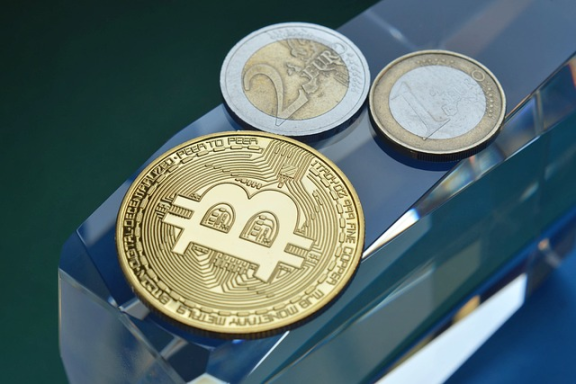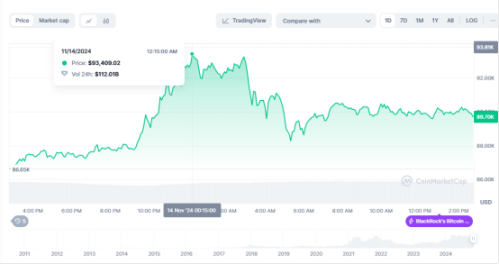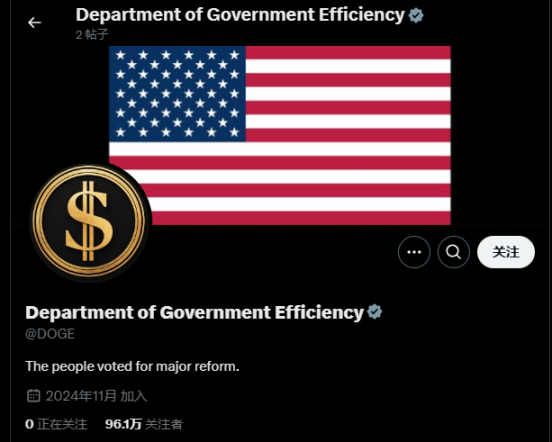Is Bitcoin Going to the Moon?
Written by: Tuo Luo Finance

From $70,000 to $90,000, Bitcoin only took a week. In the early hours of today, Bitcoin hit a new high, surging past the $90,000 mark, reaching a peak of over $93,000, just a step away from the $100,000 predicted by analysts.
The raging bull market is emerging, and the crypto world is buzzing, with news heating up as well. Can this upward trend be sustained? How far can the Trump effect go? The market is full of opinions.
Before the election, Bitcoin surged to $74,000, at which time there were still doubts in the market, with bearish and conservative voices lingering, but it has been proven that the Trump effect is more promising than expected.
In the early hours of today, Bitcoin rose nearly 6% within the day, officially standing at $90,000, peaking at $93,462. Although it later retreated to $90,000, Bitcoin has risen over 33% since the U.S. election. After breaking through $93,000, Bitcoin's market cap briefly rose to $1.84 trillion, surpassing Saudi Aramco, and at one point ranked as the 7th mainstream asset globally.

The crypto market is also heating up, with USDT's market cap surpassing $12.784 billion, setting a new historical high. Many mainstream sectors have seen gains, with new coins like PUNT in the MEME sector continuously rising. In the early hours, cryptocurrency-related stocks in the U.S. surged collectively, with MicroStrategy up over 4%, Coinbase up 3.7%, and Riot Blockchain up 2%. The Hong Kong stock market's crypto sector also continued its upward trend, with OKEx Chain rising over 10%.
The same volatility brings the same liquidation formula. According to Coinglass data, as of this morning, the entire crypto market saw $659 million in liquidations over 24 hours, with $374 million in long liquidations and $284 million in short liquidations. The total liquidation amount for BTC was $161 million, and for ETH, it was $87.136 million.
Regarding the reasons for the rise, the Trump agenda and the outlook for Federal Reserve policy are the main supportive factors, but on the other hand, the bullish sentiment from large institutions and the trend of national reserves becoming popularized are also important reasons.
From the perspective of the Federal Reserve, after cutting interest rates by 25 basis points in November, bringing the federal funds rate down to 4.5%-4.75%, the market remains cautious about the extent of future rate cuts, especially since Trump's policy ideas have clear risks of driving up inflation. However, the CPI data released yesterday made rate cuts more feasible. Data released on Wednesday showed that the U.S. October CPI rose 2.6% year-on-year and 0.2% month-on-month; the core CPI (excluding volatile factors like energy and food) rose 3.3% year-on-year and 0.3% month-on-month, indicating that the non-farm payrolls affected by hurricanes in October were below expectations, while inflation met expectations.
In this context, traders have increased their bets on the Federal Reserve continuing to cut rates next month. According to CME FedWatch, the probability of the Federal Reserve maintaining the current rate in December is 17.5%, while the probability of a cumulative 25 basis point cut is 82.5%. The probability of maintaining the current rate in January next year is 11.9%, while the probability of a cumulative 25 basis point cut is 61.7%, and the probability of a cumulative 50 basis point cut is 26.5%.
The loose environment seems to be able to continue, pushing up the prices of risk assets. But it is worth noting that the current rise in the crypto market undoubtedly relies heavily on the favorable regulatory expectations brought by Trump. With a new official comes new fire; recently, Trump has begun to update his agenda and personnel changes since taking office.
As president, Trump needs to nominate 15 cabinet members, and those highly related to crypto are undoubtedly Elon Musk and Robert F. Kennedy Jr. Although Robert F. Kennedy has not yet taken office, the establishment of the Department of Efficiency has already begun. Trump announced that Musk and Vivek Ramaswamy will jointly lead the proposed "Department of Efficiency," stating that the agency will pave the way for dismantling government bureaucracy, reducing excessive regulatory laws and wasteful spending, and restructuring federal agencies.

Musk reposted the appointment on social media, stating that the Department of Efficiency is not a threat to democracy but a threat to bureaucracy. The efficiency of the Department of Efficiency is also rapid; today, the official X account of the Department of Efficiency has officially launched, and Musk's support for crypto is equally notable, as he released a logo with the word DOGE and also tagged @DOGE on the official account, adding fuel to the DOGE community.
From the SEC side, which is of most concern to the market, legally, the president cannot remove Gensler from the committee without just cause, and Gensler himself does not seem to have the intention to resign. However, regarding Senate nominations, Trump has hinted that he will bypass the Senate confirmation process to appoint his government members, which, if true, would greatly increase the probability of Gensler losing his position. On the other hand, the majority leader of the U.S. Senate next year will be Senator John Thune, who supports crypto legislation, laying a solid foundation for favorable policy direction.
Although from Trump's currently announced agenda, the first day of work will start with relatively easy-to-implement large-scale deportations of illegal immigrants living in the U.S., cryptocurrency is not included, but as pro-crypto members continue to join the ruling party, the long-term certainty of favorable policies is clearly visible. For example, the legal officer of Ripple, heavily affected by regulations, believes that the new government will withdraw the digital asset case, stirring market sentiment.
Unexpectedly, large institutions are betting real money on the bullish outlook. MicroStrategy is at the forefront; on the evening of November 11, MicroStrategy announced that it had purchased 27,200 Bitcoins between October 31 and November 10, costing about $2.03 billion, with an average purchase price of about $74,463 per coin. The funds for this purchase came from the company's fundraising through ATM stock sales. Currently, MicroStrategy's total holdings have reached 279,420 Bitcoins, with a total purchase cost of about $11.9 billion, and an average purchase price of about $42,692 per coin.
Wall Street is also not to be outdone; following the U.S. election, net inflows into Bitcoin ETFs and Ethereum ETFs have surged. The U.S. Bitcoin spot ETF has achieved net inflows for six consecutive days, with a total inflow of $4.705 billion, total assets under management reaching $56.475 billion, and a total market value of $95.688 billion. The Ethereum spot ETF is slightly less impressive but has also achieved over $759 million in net inflows in the past six days.

It is clear that institutions are highlighting their bullish sentiment towards Bitcoin, to the extent that they are making large-scale purchases at what can currently be considered high prices. It is worth mentioning that these large purchases by institutions also provide price support for Bitcoin. Analysts have pointed out that the current cost basis for new investors or short-term investors is about $66,800.
In addition, Trump's previously proposed Bitcoin as a U.S. reserve asset is gradually being implemented in other countries. The pioneering countries of El Salvador and Bhutan have already reaped significant benefits. For example, the government of Bhutan, with a population of less than 800,000, holds 12,576 Bitcoins, worth over $1.1 billion, making it the fourth-largest government holder of Bitcoin globally, with the total value of its Bitcoin holdings exceeding 25% of the country's GDP. Legislators in Venezuela and Germany have also proposed including Bitcoin in national reserves. Recently, Bitcoin Magazine CEO David Bailey disclosed on social media that at least one sovereign nation is actively acquiring Bitcoin and has entered the top five holders. This sovereign nation has not been disclosed, but the market speculates it to be the financially strong Qatar or Saudi Arabia, as it is difficult for economically underdeveloped regions to support such a large capital volume at current prices.
With a multitude of favorable factors converging, it is not surprising that Bitcoin is advancing rapidly. In a bull market, any positive factor can spiral to drive continuous increases, and the same goes for declines. However, it is evident that Trump remains the main driver of this bull market, and thus, his subsequent policies will be closely watched, bringing uncertainty to the market.
Although he has already gained control of Congress, Trump's primary focus after taking office will inevitably be on economic and fiscal policies and other national affairs, with the priority of the crypto industry continuing to be pushed back. More directly, the dismissal of the SEC chairman is a possibility; Trump has mentioned that he will dismiss Gensler upon taking office and will establish a presidential advisory committee on Bitcoin and cryptocurrencies. This action could be a directly observable short-term indicator, which could be quickly revealed after January 20.
As for the highly anticipated U.S. reserve asset, it can only be said that the ideal is beautiful, but the reality is harsh. On one hand, the high volatility of Bitcoin does not meet the criteria for strategic reserve assets; on the other hand, at the implementation level, including Bitcoin in national reserves still faces legal, security, and traditional institutional obstacles. Legally, the regulatory framework for Bitcoin has not yet been clarified, and issues such as classification, custody, or taxation would cause significant changes to existing regulations, even posing security risks. Even if regulations are improved, the erosion of decentralized currency on the Federal Reserve's independent policy would provoke opposition from central banks, not to mention the adaptability issues of traditional financial institutions and other vested interests. Some have pointed out that Trump is not targeting Bitcoin directly but is instead seeking risk-free arbitrage through the combination of stablecoins and Bitcoin, but this remains unproven and is currently just speculation.
Of course, with numerous obstacles, if the benefits of actual implementation are realized, they will be enormous. Notable cryptocurrency investor Novogratz has predicted that if established, Bitcoin could soar to $500,000, while Arthur Hayes believes it could reach $1 million in the future.
Regardless, based on Bitcoin's current upward momentum, the $100,000 that many analytical institutions believe is just a step away. JPMorgan has also stated that Bitcoin will continue to benefit from the Trump effect in the next eight weeks, while CNBC and Copper both believe that Bitcoin could reach $100,000 before the presidential inauguration.
It is worth noting that for short-term investors, a pullback after a rapid rise is normal. Analysts at Glassnode believe that Bitcoin has entered a price discovery phase, which historically lasts about 22 days on average, after which a significant pullback occurs, at which point about 5% of the circulating supply may be pushed below the original purchase price, and it has already maintained a high-profit position for 12 consecutive days.
However, given the current situation, expectations still have support, and the pullback will likely be relatively limited before Trump officially takes office.
免责声明:本文章仅代表作者个人观点,不代表本平台的立场和观点。本文章仅供信息分享,不构成对任何人的任何投资建议。用户与作者之间的任何争议,与本平台无关。如网页中刊载的文章或图片涉及侵权,请提供相关的权利证明和身份证明发送邮件到support@aicoin.com,本平台相关工作人员将会进行核查。




